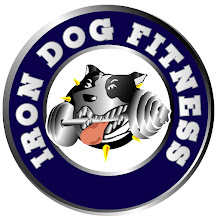Everyday we are faced with stressful situations which can have serious consequences in all aspects of our life. There are various forms of stress but they all have two unique properties. There is stress which we have immediate control of and their are those for which we have no control of because there are external forces which directly influence certain outcomes. It is also true that we all have the ability chose how we will cope with it. We can let stress consume us or we could consume it by dealing with it. According to Ragan's Health Care Communication News, an infographic published in July 2013, 'Stress-related Health care and missed work cost employers $300 Billion each year. In a similar article published by Forbes in the same period, they reported $84 Billion in loss of productivity due to absenteeism attributed to chronic health conditions. Increased stress is a well know cause of a poor or weakened immune system. Stress causes many other problems such as withdrawal from socializing, poor appetite (in other cases increased appetite), reduced energy, poor sex drive, other health related problems, depression, skin problems, various other emotional problems and more.
The foods we eat may exacerbate symptoms associated with stressful problems. Staying active can help reduce the affects of stress if we find the right type of activities. Taking on to much can make it worse. Below is an interesting infographic of foods you can eat to help your body cope with stress:
Although coffee was listed you should be careful about taking this tip. One of the hormones which is affected by stress is adrenaline which is released by your Adrenal Glands located just above your Kidneys. It may seem like a plus to feel more excited but keep in mind to much Adrenaline can affect your mindset and heart as well. Both Western and Chinese Medicine contribute increased stress on the Kidneys to increased stress on the heart. Since caffeine is a stimulate and diuretic the positive side of it is increase alertness and mood. At the same time for some, caffeine causes them to be fidgety and agitated which are both associated with stress. Increase urination can cause more stress, especially if you are forced to hold it. If you are the kind of person who becomes easily irritable it is probably best not to consume caffeine. This may hold true also if you already have heart problems. If you suffer from Anxiety, caffeine and coffee may also not be a good choice. If you are allergic to nuts, it's just common sense not to eat them.
Amongst the top 10 jobs associated with the highest levels of stress were those in public safety, CEO's, public transportation and journalists. We constantly see publications either from the media or individuals of how intolerant people are of police officers, top company executives and political leaders. These same folks take little time to consider the amounts of stress and pressure these type of people feel from not just their type of job, but the media, family and the public. A certain percentage of people in low-income brackets are more likely to complain about the job performance of these types of workers and at the same time deal with the stress themselves in much less reasonable ways like looting, rioting and public shaming as well as violence against non-responsible parties for the cause of their personal stress.
We need to become more familiar with the way we deal with stress. Find out the root source and address the situation with a reasonable action such as improving daily choices of food, exercise, stress management through exercise, yoga or meditation; seeking counseling when necessary; seeking better inner personal communication with our family, loved ones and those around us on a daily basis and more time spent socializing with positive people. If anything do something everyday that will make someone around you feel great about themselves.
Check out this infographic below for more information:
Sources of information:
Infographic: Stress and your health








